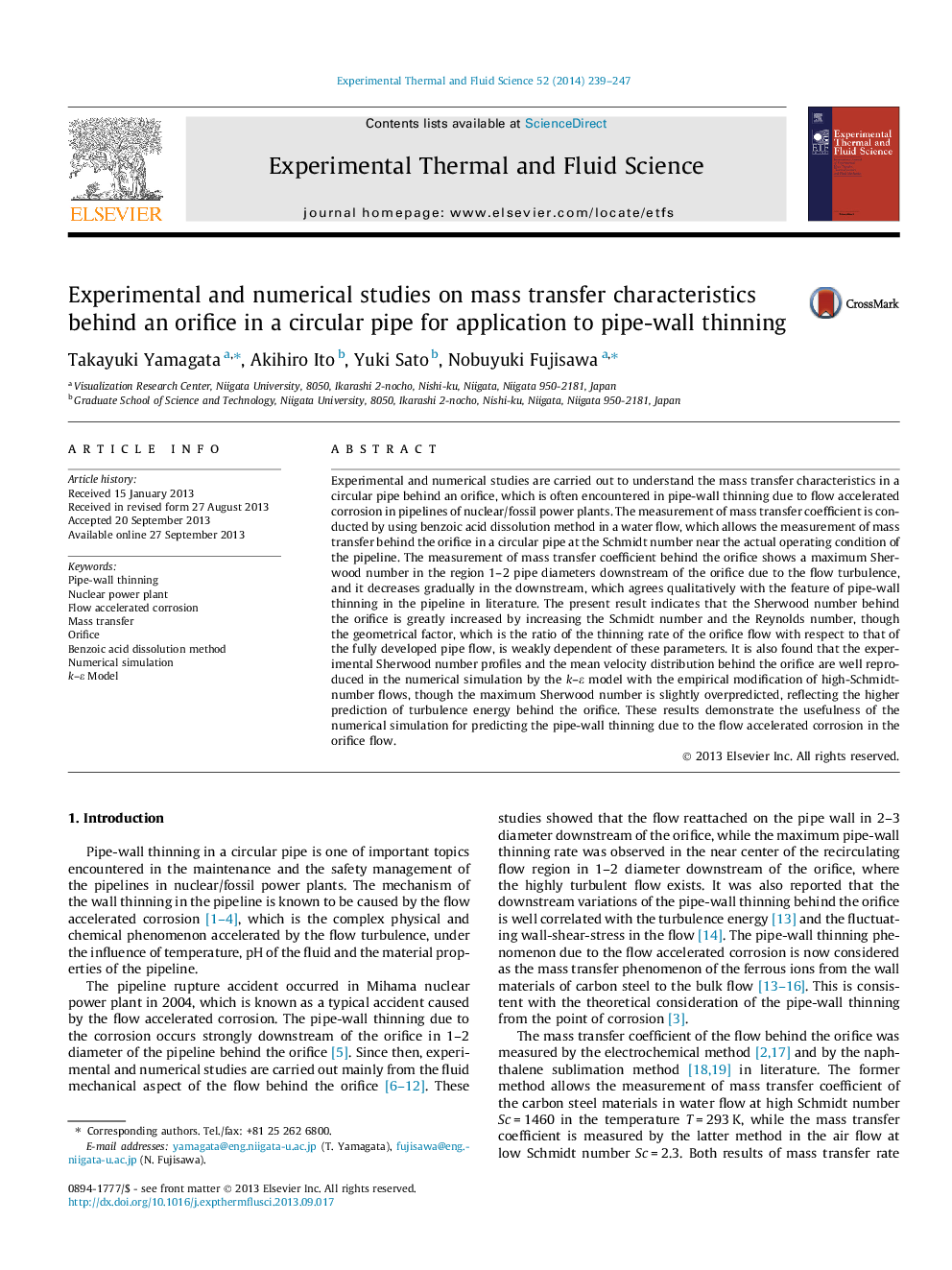| کد مقاله | کد نشریه | سال انتشار | مقاله انگلیسی | نسخه تمام متن |
|---|---|---|---|---|
| 651380 | 1457424 | 2014 | 9 صفحه PDF | دانلود رایگان |
• Pipe-wall thinning due to flow accelerated corrosion is studied.
• Mass transfer downstream of orifice in a circular pipe was investigated.
• Mass transfer coefficient was measured by benzoic acid dissolution method.
• Maximum Sherwood number was formulated with Schmidt number and Reynolds number.
• Geometrical factor was weakly dependent on Schmidt numbers and Reynolds number.
Experimental and numerical studies are carried out to understand the mass transfer characteristics in a circular pipe behind an orifice, which is often encountered in pipe-wall thinning due to flow accelerated corrosion in pipelines of nuclear/fossil power plants. The measurement of mass transfer coefficient is conducted by using benzoic acid dissolution method in a water flow, which allows the measurement of mass transfer behind the orifice in a circular pipe at the Schmidt number near the actual operating condition of the pipeline. The measurement of mass transfer coefficient behind the orifice shows a maximum Sherwood number in the region 1–2 pipe diameters downstream of the orifice due to the flow turbulence, and it decreases gradually in the downstream, which agrees qualitatively with the feature of pipe-wall thinning in the pipeline in literature. The present result indicates that the Sherwood number behind the orifice is greatly increased by increasing the Schmidt number and the Reynolds number, though the geometrical factor, which is the ratio of the thinning rate of the orifice flow with respect to that of the fully developed pipe flow, is weakly dependent of these parameters. It is also found that the experimental Sherwood number profiles and the mean velocity distribution behind the orifice are well reproduced in the numerical simulation by the k–ε model with the empirical modification of high-Schmidt-number flows, though the maximum Sherwood number is slightly overpredicted, reflecting the higher prediction of turbulence energy behind the orifice. These results demonstrate the usefulness of the numerical simulation for predicting the pipe-wall thinning due to the flow accelerated corrosion in the orifice flow.
Journal: Experimental Thermal and Fluid Science - Volume 52, January 2014, Pages 239–247
